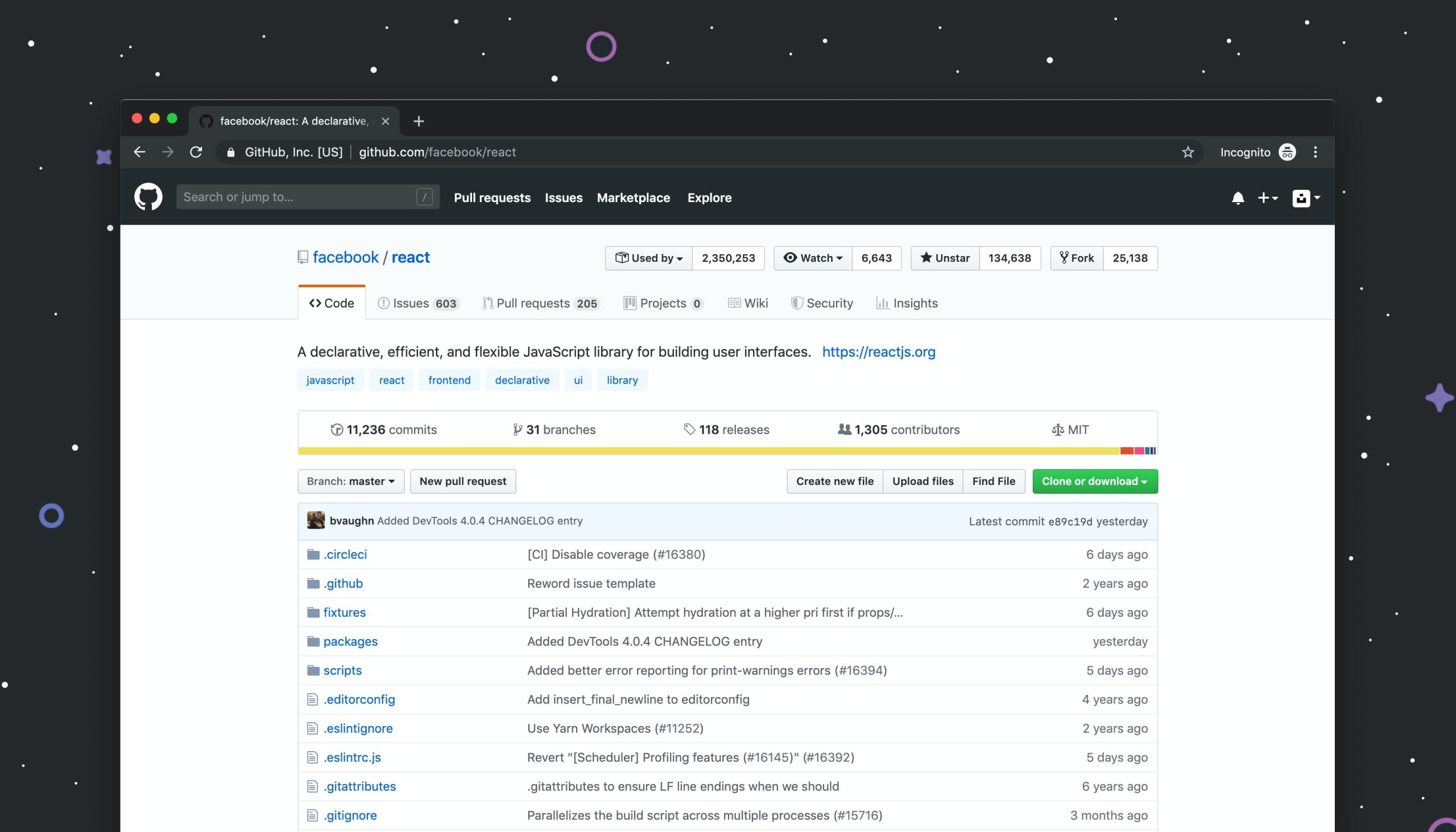Internet and Telecom
Revolutionizing Connectivity: How 5G is Transforming the Telecom Industry

The world of technology is constantly evolving, and the latest innovation that’s turning heads is 5G. With its lightning-fast speed and impressive connectivity capabilities, this game-changing technology is set to revolutionize the telecom industry like never before. From enhancing mobile data speeds to creating an interconnected world with IoT devices, 5G has immense potential for transforming how we live our lives. Join us as we delve deep into the exciting world of 5G and explore how it’s reshaping the future of communication!
Pros and Cons of 5G
The long-awaited 5G network is finally here, and it’s poised to change the telecom landscape as we know it. But what exactly is 5G, and what does it mean for consumers and businesses? Here, we take a look at the pros and cons of the new network.
PROS:
1. Increased Speed: One of the biggest selling points of 5G is its increased speed. With speeds up to 20 times faster than 4G LTE, 5G promises a more seamless experience for users. Whether you’re streaming movies or downloading files, 5G will make your experience faster and smoother.
2. More Reliable Connections: In addition to being faster, 5G is also more reliable than previous generations of wireless networks. This means that you’re less likely to experience dropped calls or connection issues in areas with high traffic.
3. Lower Latency: Another advantage of 5G is its lower latency rate. This means that there will be less lag time when you’re using applications that require real-time responses, such as online gaming or video conferencing.
4. Greater Capacity: The increased speed and reliability of 5G will also result in greater capacity for users. This means that more people will be able to use the network at the same time without experiencing any slowdown in service.
5. IoT Support: The fifth generation wireless network will also enable better support for the
What is the Future of 5G?
The future of 5G is very exciting. With the release of faster speeds and more consistent coverage, 5G is expected to change the way we use the internet and connect with each other. Here are some of the ways that 5G is expected to revolutionize the telecom industry:
1. Increased Speed and Capacity: 5G will be significantly faster than 4G LTE, with speeds up to 10 gigabits per second. This will allow for much more data to be transferred wirelessly at a much faster rate.
2. More Reliable Connections: 5G will also be more reliable than 4G LTE, with less latency and connection drops. This will enable users to have a better experience when using applications that require a lot of data, such as video streaming or gaming.
3. Lower Power Consumption: One of the benefits of 5G is that it will be much more power efficient than 4G LTE. This means that devices can stay connected for longer without having to worry about battery life as much.
4. Improved Coverage: 5G will have a wider coverage area than 4G LTE, meaning that more people will be able to access high-speed wireless internet in more places.
5. New Applications: With the increased speed and reliability of 5G, new applications and services will become possible that couldn’t have been developed before. For example, virtual reality or augmented reality services could become mainstream with 5
How 5G is Transforming the Telecom Industry
The next generation of wireless technology, 5G, is poised to revolutionize the telecom industry. 5G will enable new levels of performance and efficiency, with speeds up to 10 times faster than 4G. This will provide a major boost to mobile broadband and open up new opportunities for service providers and enterprises alike.
5G will enable a wide range of new applications and services, including high-definition video streaming, virtual reality, augmented reality, and the Internet of Things. Service providers will be able to offer new services and capabilities at much lower costs, thanks to the increased efficiency of 5G networks.
5G will also have a major impact on the way enterprises do business. For example, 5G-enabled edge computing will allow businesses to process data closer to where it is being generated, reducing latency and providing a more responsive experience for employees and customers alike.
In short, 5G is set to transform the telecom industry in a big way. Service providers and enterprises that are prepared for this shift will be well-positioned to take advantage of the many opportunities that 5G will create.
Conclusion
The introduction of 5G technology is a game-changer for the telecom industry. It will enable lightning-fast connection speeds and allow businesses to leverage this power to become more connected than ever before. With its revolutionary potential, 5G promises to revolutionize the way we communicate with one another and open up whole new opportunities in the tech space. We are excited to see what comes next for 5G as it continues its journey towards transforming connectivity on a global scale!
Finance
How Bitcoin Play An Important Role In Finance

Bitcoin, the pioneering cryptocurrency, has not only revolutionized finance but also become a prime target for hackers and fraudsters seeking to exploit its decentralized nature and pseudonymous transactions. In recent years, several high-profile scams have shed light on the vulnerabilities within the Bitcoin ecosystem. This article explores the methods hackers use to exploit Bitcoin, analyzes notable scams, and discusses lessons learned to enhance security measures.
Methods of Exploitation

This image is taken from google.com
Hackers employ various sophisticated techniques to exploit Bitcoin, capitalizing on weaknesses in both technical infrastructure and human behavior:
- Phishing and Social Engineering
Phishing attacks target individuals through deceptive emails, websites, or messages, tricking users into revealing private keys or login credentials.
- Malware and Ransomware
Malicious software infects devices to steal Bitcoin wallets or extort users by encrypting data and demanding ransom payments in Bitcoin.
- Exchange Hacks
Cybercriminals target cryptocurrency exchanges, exploiting vulnerabilities in their security protocols to steal users’ funds.
- Ponzi Schemes and Investment Scams
Fraudsters lure investors with promises of high returns, using Bitcoin to mask their activities and evade regulatory scrutiny.
Analysis of Notable Scams
Several high-profile incidents illustrate the diverse tactics employed by hackers and fraudsters:
| Scam | Description | Impact |
|---|---|---|
| Mt. Gox | Major Bitcoin exchange hacked in 2014, resulting in loss of 850,000 Bitcoins. | Loss of investor funds, bankruptcy proceedings. |
| Bitfinex Hack | 2016 breach led to theft of 120,000 Bitcoins from user accounts. | Significant financial losses, reputational damage. |
| PlusToken Ponzi Scheme | Operating from 2018-2019, promised high returns, defrauded investors of billions in Bitcoin. | Large-scale financial losses, arrests of perpetrators. |
Lessons Learned
From these scams, critical lessons emerge for stakeholders in the cryptocurrency ecosystem:
- Enhanced Security Measures
Implement robust security protocols, including multi-factor authentication and cold storage for large holdings.
- Regulatory Compliance
Stricter regulations can mitigate fraud and enhance transparency in cryptocurrency transactions.
- Education and Awareness
Educate users about phishing tactics, the importance of securing private keys, and due diligence in investment decisions.
- Innovative Technologies
Develop and adopt advanced blockchain analytics and AI-driven security solutions to detect and prevent fraud.
Comparative Table: Security Measures
| Security Measure | Effectiveness | Implementation |
|---|---|---|
| Multi-factor Authentication | High | Widely adopted, enhances login security. |
| Cold Storage | Very High | Best practice for storing large amounts securely. |
| Blockchain Auditing Tools | Moderate to High | Helps track transactions, detect anomalies. |
| AI-driven Fraud Detection | Emerging | Promising for real-time detection of suspicious activity. |
Regulatory Challenges and Global Cooperation
Addressing the vulnerabilities in Bitcoin requires a coordinated international effort. The decentralized and borderless nature of cryptocurrencies poses challenges for regulatory bodies worldwide. Different jurisdictions have varying approaches to oversight, which can create loopholes for fraudsters to exploit. However, recent initiatives by regulatory bodies to enhance KYC (Know Your Customer) and AML (Anti-Money Laundering) practices are steps in the right direction. Collaborative efforts between governments, financial institutions, and blockchain developers are crucial for establishing robust regulatory frameworks that protect investors without stifling innovation.
Impact on Investor Confidence and Market Volatility
The prevalence of Bitcoin scams not only affects individual victims but also undermines broader market confidence. High-profile incidents, such as exchange hacks or Ponzi schemes, can lead to significant market volatility, affecting Bitcoin’s price and overall sentiment. Investors may become wary of participating in the cryptocurrency market, fearing potential loss of funds due to security breaches or fraudulent schemes. Therefore, restoring and maintaining trust through enhanced security measures and transparent practices is essential for fostering a stable and resilient cryptocurrency ecosystem.
Emerging Trends in Cybersecurity for Cryptocurrencies
As hackers evolve their tactics, the cybersecurity landscape must also adapt. Emerging technologies such as blockchain analytics and AI-driven fraud detection are becoming pivotal in combating cryptocurrency fraud. Blockchain analytics tools can trace transactions and identify suspicious patterns, while AI algorithms can analyze vast amounts of data in real-time to detect anomalies indicative of fraud. Moreover, decentralized finance (DeFi) platforms are implementing innovative security measures to protect user funds without relying on centralized entities. These advancements signify a promising trend towards greater security and resilience in the face of evolving cyber threats in the cryptocurrency space.
Conclusion
As Bitcoin and cryptocurrencies continue to evolve, the threat landscape posed by hackers and fraudsters evolves in tandem. By understanding their methods, analyzing past scams, and implementing rigorous security measures, stakeholders can mitigate risks and foster a safer environment for Bitcoin transactions. Vigilance, education, and innovation are key to safeguarding the future of digital finance against exploitation.
Internet and Telecom
Creative Magic: Unleashing DALL-E 3 in Microsoft Bing for Free
Creative Magic: Unleashing DALL-E 3 in Microsoft Bing for Free
Unleashing Creative Magic: DALL-E 3 Mastery with Microsoft Bing for Content Creators and Graphic Designers
Meet the Author: Fred’s Journey into AI Art
Hello, dear readers. I’m Fred, a digital artist and design enthusiast. My journey into the world of AI art began when I discovered the incredible capabilities of DALL-E, OpenAI’s AI art generator. Today, I’m thrilled to guide you through it’s wonders, the latest and most advanced version, in collaboration with Microsoft Bing.
What is DALL-E 3 and Why Should You Care?
DALL-E 3 is a text-to-image generative AI, a marvel that transforms text descriptions into stunning visuals. As a digital artist or design enthusiast, this tool can be your creative ally. It seamlessly integrates with ChatGPT, offering high-resolution images with exceptional detail. It’s a powerhouse that can inspire and elevate your artistic expression.
How to Access DALL-E 3 with Microsoft Bing
Bing Chat: Your Conversational Canvas
- Sign in to Bing Chat with your Microsoft account.
- Input your text prompt and witness four image variations generated.
- Choose or request more options and refine your image with follow-up questions.
- Save your masterpiece by clicking and downloading.
Bing Image Creator: Streamlined Image Generation
- Sign in to Bing Image Creator using your Microsoft account.
- Input your text prompt, view image variations, and choose or request more options.
- Edit your prompt or change image style using the buttons.
- Save your chosen image with a click.
Table: Microsoft Bing Features for DALL-E 3
| Feature | Bing Chat | Bing Image Creator |
|---|---|---|
| Interaction Method | Chat with AI for feedback and suggestions | Generate images without AI chat |
| Steps | Sign in, type prompt, choose/ask for variations | Sign in, type prompt, choose/ask for variations, edit style |
| Additional Refinement | Ask follow-up questions, refine image with requests | Edit prompt, change image style |
| Saving | Click and download | Click and download |
How to Use DALL-E 3 with ChatGPT: A Step-by-Step Guide
- Subscribe to ChatGPT Plus or Enterprise:
- Choose ChatGPT Plus ($20/month) or Enterprise ($100/month) for access to DALL-E 3.
- Subscribe by logging in to ChatGPT and clicking on My Plan.
- Select GPT-4 and DALL-E 3:
- Access DALL-E 3 by selecting GPT-4 as the model in the GPT-4 tab.
- Choose Beta version from the dropdown menu.
- Enter your prompt into the chat:
- Start creating images from text by entering your prompt.
- Use natural language for suggestions or feedback.
- Wait for the images to appear:
- DALL-E 3 will generate four image variations.
- Choose or request more options, refine your image, and download or share.
Table: ChatGPT Subscription Plans
| Plan | Features | Subscription Cost |
|---|---|---|
| ChatGPT Plus | Access to GPT-4 and DALL-E 3, $20/month | $20 per month |
| Enterprise | Additional features, custom domains, unlimited prompts, etc. | $100 per month |
How to Refine Your Images with DALL-E 3: Tips and Tricks
DALL-E 3 is a potent tool, but mastering it requires finesse:
- Use clear and descriptive language for detailed prompts.
- Provide multiple prompts for diverse image sets.
- Experiment with different styles, themes, and formats.
Photo by Google DeepMind: https://www.pexels.com/photo/an-artist-s-illustration-of-artificial-intelligence-ai-this-image-represents-how-machine-learning-is-inspired-by-neuroscience-and-the-human-brain-it-was-created-by-novoto-studio-as-par-17483868/
How to Use DALL-E 3 Safely and Responsibly
While DALL-E 3 offers boundless creative possibilities, it comes with ethical responsibilities:
- Avoid creating harmful, offensive, or illegal content.
- Respect privacy, dignity, and consent.
- Uphold intellectual property, trademark, and copyright rights.
- Stay honest and avoid creating misleading or fake content.
- Refrain from creating obscene, pornographic, or sexually explicit images.
- Ensure your creations align with legal, ethical, and moral standards.
Use tools like Winston AI and Originality AI to ensure your creations are respectful and legally sound.
Conclusion: Unleash Your Creative Potential
As we conclude this journey into the realm of DALL-E 3 and Microsoft Bing, I encourage you to experiment, create, and unleash your creativity. DALL-E 3 and ChatGPT are powerful tools that can be used for art, education, or pure fun. Just remember to use them responsibly, respecting the rights and feelings of others. Share your creations and feedback with us—let’s create stunning AI art together.
Internet and Telecom
Unraveling Anxiety: AI’s Threat to Authorial Creativity

Unraveling Anxiety: AI’s Threat to Authorial Creativity
Introduction:
In a world where technological advancements permeate nearly every facet of our lives, the realm of literature stands on the precipice of a profound transformation. AI, the pinnacle of creativity, has permeated the once-sacrosanct sphere of writing. This integration, while promising efficiency and assistance, has ushered in a storm of debates among published authors, writing communities, and literary critics.
Meet Emma Sanders, an illustrious author whose writing journey spans the traditional and the modern. Her expertise traverses the intricate landscapes of storytelling, granting her a unique vantage point in the discourse surrounding AI’s influence on authorial creativity.
The Rise of AI in Writing
AI, a formidable force in the technological world, has swiftly infiltrated the writing domain, offering an array of tools designed to streamline and optimize the creative process. From grammar correction to content generation, AI’s potential to enhance efficiency is undeniable. Yet, it simultaneously raises poignant questions regarding the preservation of the human touch within literature.
Benefits and Pitfalls of AI Tools
The utilization of AI tools heralds a myriad of advantages. It minimizes errors, amplifies productivity, and expedites the drafting process. However, a concerning shadow looms—a potential homogenization of writing styles, threatening the very essence of individuality and creativity in literary works.
Impact on Authorial Creativity
Authors find themselves at a crossroads, grappling with the challenge of integrating AI tools without relinquishing their distinctive creative voice. Critics lament the potential loss of emotional depth and originality in works predominantly generated by AI.
Challenges Faced by Authors
The omnipresent fear of being overshadowed by AI-generated content and the mounting pressure to conform to AI-optimized writing styles form the crux of the challenges faced by authors in the current literary landscape.
Community Response and Debates
Within writing communities, a schism emerges. While some writers laud AI as a helpful assistant, others vehemently oppose its intrusion, fearing the erosion of genuine artistic expression and individuality.
Preserving Creativity Amidst AI
Navigating this dilemma mandates finding a balance—leveraging AI as a tool without allowing it to dictate the essence of one’s writing. The pivotal challenge lies in embracing AI’s efficiency while nurturing and preserving individual creativity.
The Future of Writing: Human vs. AI
Debates persist regarding the inevitability of AI wholly replacing human authors or whether a harmonious coexistence, with each contributing uniquely to the literary world, is achievable.

Picture by: Unveil how the mind exaggerates negatives. Dive into psychology’s insights for those battling pessimism, exploring the brain’s quirks. Discover solutions to tackle negative thought patterns
Strategies for Writers and Critics
Practical strategies surface as essential. Writers must explore AI tools while safeguarding their distinctiveness, while critics must objectively analyze AI’s impact on literature.
Collaboration or Competition: Finding Balance
The imminent future of writing might hinge on exploring avenues where AI and human creativity coalesce rather than clash. Collaboration might just be the linchpin for a harmonious literary landscape.
Conclusion: Nurturing Creativity in the AI Era
In a world where AI has seamlessly integrated into the writing realm, preserving authorial creativity emerges as the cornerstone. Understanding the intricacies and leveraging AI without diluting individuality appear to be the beacon guiding writers toward a balanced coexistence with AI in the realm of literature.
-
Business1 year ago
Cybersecurity Consulting Company SequelNet Provides Critical IT Support Services to Medical Billing Firm, Medical Optimum
-
Business1 year ago
Team Communication Software Transforms Operations at Finance Innovate
-
Business1 year ago
Project Management Tool Transforms Long Island Business
-
Business1 year ago
How Alleviate Poverty Utilized IPPBX’s All-in-One Solution to Transform Lives in New York City
-
health1 year ago
Breast Cancer: The Imperative Role of Mammograms in Screening and Early Detection
-
Sports1 year ago
Unstoppable Collaboration: D.C.’s Citi Open and Silicon Valley Classic Unite to Propel Women’s Tennis to New Heights
-
Art /Entertainment2 years ago
Embracing Renewal: Sizdabedar Celebrations Unite Iranians in New York’s Eisenhower Park
-
Finance2 years ago
The Benefits of Starting a Side Hustle for Financial Freedom
































